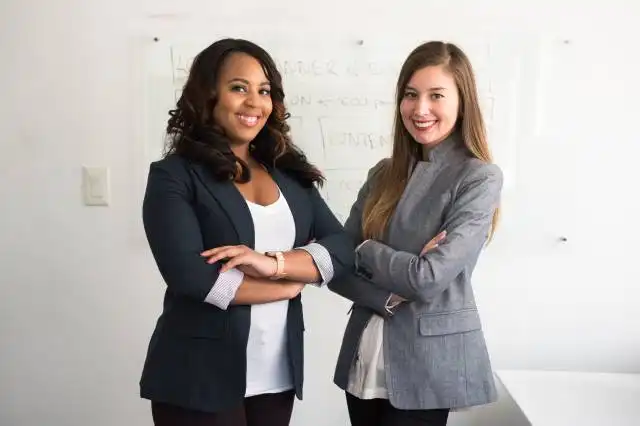Start a Tiny House Business
Turning Small Spaces into Big Dreams with Tiny House Business
| Updated


TINY HOUSE BUSINESS
Think you've mastered small game of Tetris? Now's the time to take your engagement with tiny spaces to the next level with the Tiny House Business! It's not just about building or selling micro dwellings, it's about folding the immense joy of large living in the pocket-sized spaces. Think minimalist construction, environmentally-friendly design, and customizable living all packaged into a pint-sized home! As a Tiny House entrepreneur, you'll be providing life-changing spaces that embody the essence of minimalistic and sustainable living.
Jump to Business Plan
RELATED BUSINESS IDEAS
Browse ALL Construction & Real Estate Business Ideas
Discover Your Perfect Domain
Unlock the door to your online success with our hand-picked selection of premium domain names. Whether you're starting a new venture or rebranding an existing one, the right domain can set the tone for your digital presence. Browse through our curated list, each with its unique potential to enhance your brand's visibility and credibility.
TINY HOUSE MINI BUSINESS PLAN
This a quick reality check to help you identify the strengths and weaknesses of your business concept before you dive in.
Expected Percent Margins:
- Gross Margin: 25-35%
- Net Profit Margin: 10-20%
Earnings Expectations:
- Daily Earnings: Assuming 1 house per month, approximately $100 - $300
- Weekly Earnings: Approx. $500 - $1,500
- Monthly Earnings: $2,000 - $6,000 (from 1 tiny house sale)
- Annual Earnings: $24,000 - $72,000 (for a start)
Actions to Hit Those Numbers:
Product and Materials:
- Initial Investment: At least $15,000-$30,000 per house build, depending on finishes.
- Supplier network: Build relationships with reliable materials suppliers for better rates.
Marketing and Customer Acquisition:
- Digital Marketing: Invest in a good website with engaging content and SEO.
- Expos: Participate in Tiny House Expos or similar events for direct marketing.
Sales and Customer Experience:
- Show House: Investing in a high-quality show house can attract more customers.
- Customer Service: As a niche sector, customer satisfaction will be key to word-of-mouth marketing.
Cost Control:
- Efficiencies: So, while keeping quality high, seek time and material efficiency in the build process.
- Scale: Build a reputation and scale the business to enjoy economies of scale.
Business Operations:
- Compliance: Ensure each build complies with relevant regulations and building codes.
- Speed: Aim to minimize the building time while maintaining quality workmanship.
These are general estimations and will vary a lot based on various factors including region, choice of finishing materials, customer preferences, competition, and so on. It's highly recommended to get in touch with an experienced financial advisor for personalized advice.
NOT WHAT YOU HAD IN MIND? Here are more ideas



Browse ALL Construction & Real Estate Business Ideas
Grab Your Business Website Name
Before you get caught up in the whirlwind of setting up your business, invest in a domain name. It's a small but significant step that lays the foundation for your brand and makes it easier for customers to find and trust you. Just like you wouldn't build a house without securing the land first, don't build a business without securing your domain name.
"Why? Can't that wait?" Here's why it shouldn't
Step 1: Determine if a Tiny House Business is Right for You
Breakdown of Startup Expenses
When starting a tiny house business, it is important to consider the startup expenses. This includes the cost of materials, tools, and labor needed to build the tiny house. In addition, there may be costs associated with obtaining the necessary permits and licenses, as well as advertising and marketing expenses. It is important to consider all of these costs and determine if the business is financially feasible.
Breakdown of Ongoing Expenses
In addition to the startup costs, there are also ongoing expenses associated with running a tiny house business. These include the cost of materials for repairs and maintenance, as well as labor costs for any work that needs to be done. It is important to consider these costs and determine if the business can sustain itself over the long term.
Examples of Ways to Make Money
There are a variety of ways to make money with a tiny house business. This includes renting out the tiny house to travelers, selling the tiny houses to individuals, or even offering custom builds to customers. It is important to consider all of these options and determine which one is the most profitable for the business.
Step 2: Naming the Business
When it comes to naming a business, it is important to come up with something that is unique and memorable. It should also be easy to pronounce and spell. Additionally, it should be relevant to the type of business and should be able to be trademarked. It is also important to make sure the name is not already taken by another business.
When coming up with a name, it is important to brainstorm and come up with a few options. It is also important to research the names to make sure they are not already taken. Additionally, it is important to consider the domain name and social media handles associated with the name. It is also important to consider how the name will look on a logo or business card.
Once a few names have been chosen, it is important to get feedback from friends and family. This can help narrow down the list of names and help determine which name is the best fit. Additionally, it is important to consider the target audience and how they will perceive the name.
Finally, it is important to make sure the name is legally available. This means checking with the U.S. Patent and Trademark Office to make sure the name is not already taken. Additionally, it is important to check with the Secretary of State to make sure the name is available for use in the state where the business is located.
Step 3: Obtain Necessary Licenses and Permits
Before starting a tiny house business, it is important to obtain the necessary licenses and permits. Depending on the state, there may be different requirements for businesses. For example, some states may require a business license, while others may require a contractor’s license. Additionally, some states may require a zoning permit, which allows the business to operate in a certain area. It is important to research the specific requirements for the state in which the business is located.
Once the necessary licenses and permits have been obtained, it is important to keep them up to date. This may require renewing the license or permit every year or every few years. Additionally, it is important to make sure that the business is in compliance with any regulations or laws that may be relevant to the business. This may include regulations related to health and safety, environmental protection, and labor laws.
It is also important to consider any insurance needs for the business. This may include general liability insurance, property insurance, and workers’ compensation insurance. Having the right insurance coverage can help protect the business from potential liabilities and losses.
Finally, it is important to consider any local regulations or ordinances that may be applicable to the business. This may include regulations related to noise, parking, and waste management. It is important to research any local regulations that may be applicable to the business and make sure that the business is in compliance with them.
Step 4: Create a Business Plan
Creating a business plan is a crucial step in starting a tiny house business. A business plan is a written document that outlines the goals, strategies, and resources needed to start and run a successful business. It should include an executive summary, a description of the business, a market analysis, a competitive analysis, a description of the product or service, a marketing plan, an operations plan, and a financial plan. It should also include a timeline for the business, a list of milestones, and a budget. A business plan should be updated regularly as the business grows and changes.
Step 5: Obtain Financing
Financing is an important part of starting a tiny house business. There are several options available, including personal savings, loans from family and friends, bank loans, and crowdfunding. It is important to research all of the options available to determine which one is the best fit for the business. Additionally, it is important to create a budget and stick to it, as well as to create a plan for repayment of any loans taken out.
Step 6: Market the Business
Marketing is an important part of any business, and a tiny house business is no exception. There are several ways to market a tiny house business, including social media, online ads, print ads, and word of mouth. It is important to create a marketing plan that outlines the goals, strategies, and budget for the business. Additionally, it is important to track the results of the marketing efforts to ensure that they are effective.
Step 7: Build the Tiny House
Building the tiny house is the most important step in starting a tiny house business. It is important to research the different types of tiny houses available and decide which one is the best fit for the business. Additionally, it is important to research the materials needed to build the tiny house, as well as the cost of the materials. It is also important to research the local building codes and regulations to ensure that the tiny house is built to code.
Step 8: Sell the Tiny House
Once the tiny house is built, it is time to sell it. There are several ways to sell a tiny house, including online, at trade shows, and through word of mouth. It is important to research the different methods of selling to determine which one is the best fit for the business. Additionally, it is important to create a pricing strategy and to track the results of the sales efforts.
Step 9: Manage the Business
Once the tiny house business is up and running, it is important to manage it properly. This includes tracking the finances, managing the employees, and ensuring that the business is compliant with all local, state, and federal regulations. Additionally, it is important to stay up to date on the latest trends in the industry and to adjust the business accordingly. Finally, it is important to create a plan for the future of the business and to continually strive to improve the business.
Step 5: Secure Financing
Securing financing is a critical step in starting a tiny house business. Depending on the size of the business, financing may be needed for purchasing materials, hiring staff, and other expenses. It is important to research different financing options and determine which one is best for the business. For example, a business loan from a bank may be the best option for larger businesses, while a personal loan may be the best option for smaller businesses. Additionally, it is important to consider the interest rates and repayment terms associated with each loan option. It is also important to consider any tax implications associated with the loan. Finally, it is important to consider any other financing options, such as crowdfunding or angel investors, that may be available.
Step 6: Find a Location
Finding a suitable location for a tiny house business is essential. It should be in a place that has a good amount of foot traffic, as well as a good amount of potential customers. It should also be in a place that is easy to access, and that has a good amount of parking. Additionally, the location should be in an area that is zoned for commercial use, and that has all the necessary permits and licenses. It is also important to consider the cost of renting or buying the space, as well as any additional costs associated with the location. Finally, it is important to consider the safety of the location, and to make sure that it is up to code for the type of business being operated.
Step 7: Purchase Supplies
Once you have a business plan and the necessary permits, it’s time to purchase supplies. Depending on the type of tiny house business you’re starting, you may need to purchase construction materials, tools, and other supplies. Make sure to factor in the cost of these supplies when creating your budget. You may also need to purchase insurance to protect yourself and your business. Consider the type of insurance you need, such as liability insurance, and shop around for the best rates. Additionally, you may need to purchase a vehicle to transport your tiny houses, such as a trailer or truck. Make sure to factor in the cost of purchasing and maintaining a vehicle when creating your budget.
Step 8: Market the Business
Once the business is up and running, it is important to market the business to potential customers. This can be done through a variety of methods, such as creating a website, utilizing social media, and attending local events. It is important to create a brand for the business, including a logo and tagline, that will help customers recognize the business. Additionally, it is important to create a marketing plan that outlines the budget and goals for the business. This plan should include a strategy for reaching potential customers, such as advertising in local publications, creating partnerships with other businesses, and using search engine optimization. Finally, it is important to measure the success of the marketing efforts to ensure that the business is reaching its goals.
Step 9: Launch the Business
Launching the business is the final step in starting a tiny house business. It is important to have a plan in place to ensure the business is successful. First, create a website and social media accounts to promote the business. This will help to reach potential customers and create a platform to showcase the tiny houses. Additionally, create a marketing plan to promote the business. This should include advertising, public relations, and other tactics to reach potential customers. Additionally, create a budget for marketing and advertising. This will help to ensure that the business has the resources to reach its target audience. Finally, create a customer service plan to ensure that customers are satisfied with their tiny house purchase. This should include a customer service line, email address, and other methods to ensure that customers can contact the business with any questions or concerns. With these steps in place, the business is ready to launch and start selling tiny houses.
EXPLORE MORE CATEGORIES
Browse ALL Business Idea Categories
TAKE THE NEXT STEPS










